40 reading and understanding food labels
Understanding Food Labels - Safe Teens The Food and Drug Administration (FDA) and the Department of Agriculture (USDA) decide what goes on food labels. All food labels must show the same health information. It is impossible for food companies to lie on their labels. For example, if your favorite yogurt says "low fat" then it must meet strict guidelines to have that label. PDF A Guide to Reading Food Labels - University of Rochester Understanding the Percent Daily Values (% DV) on a food label can help you choose foods high in good nutrients and low in bad nutrients. The % DV is based on a 2,000-calorie diet. If you eat less than 2,000 calories a day, your daily value may be lower than what is listed on the label. If you eat more than 2,000 calories a day, your daily value
Understanding Food Labels | The Nutrition Source | Harvard ... Understanding Food Labels The information on food labels is intended to help consumers become savvy about their food choices. The front, back, and sides of a package are filled with information to inform us what the food contains and to provide guidance in making healthier selections of processed foods.
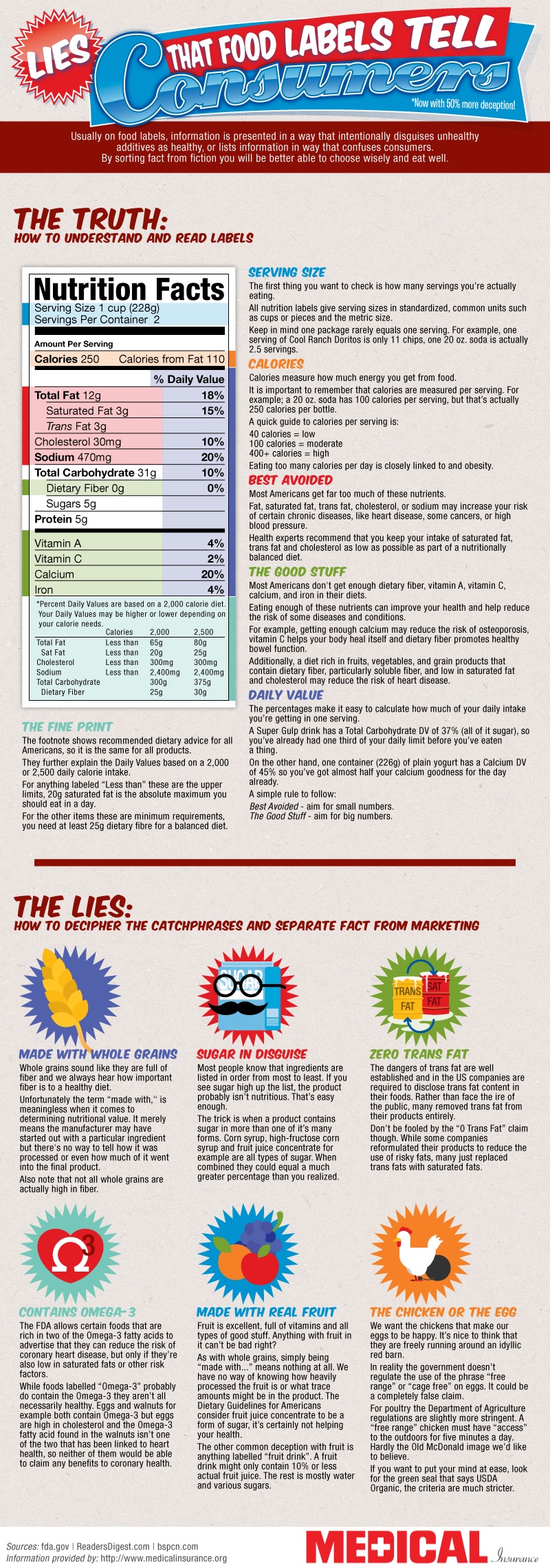
Reading and understanding food labels
Reading and understanding food labels - Human Kinetics Food labels are not required on fresh meat, poultry, raw seafood, fresh fruit and vegetables, food prepared or processed in store, foods that contain very few nutrients (e.g., vinegar, spices), and alcoholic beverages, although you can find nutrient information for these foods on Health Canada's website. Food Labels | CDC If you eat the whole thing, you are eating 8 times the amount of calories, carbs, fat, etc., shown on the label. Total Carbohydrate shows you types of carbs in the food, including sugar and fiber. Choose foods with more fiber, vitamins, and minerals. Choose foods with lower calories, saturated fat, sodium, and added sugars. Avoid trans fat. How to Understand and Use the Nutrition Facts Label | FDA You can use the label to support your personal dietary needs - look for foods that contain more of the nutrients you want to get more of and less of the nutrients you may want to limit. Nutrients...
Reading and understanding food labels. How to read food labels - Safefood Some labels use colour coding to show at a glance if a food is high, medium or low in fat, saturated fat, sugar and salt. If the label isn't colour coded, use our label decoder as a guide. The fibre content is important when you are looking at foods such as bread, cereals, pasta and rice. How to Read Food Labels Without Being Tricked Nutrition labels state how many calories and nutrients are in a standard amount of the product — often a suggested single serving. However, these serving sizes are frequently much smaller than what... Why Is Reading Food Labels Important? | livestrong Why Is Reading Food Labels Important? A woman reading a food label in the grocery aisle. All packaged foods come with a nutrition label meant to provide you with the information necessary to know exactly what you're eating. Understanding what's in the foods you eat helps you make healthier choices. Checking food labels also makes it easy for ... Learning To Read Labels :: Diabetes Education Online When you read food labels, the grams of sugar are already included in the total carbohydrate amount, so you do not need to count this sugar amount separately. The grams of sugar listed include both natural sugars, from fruit or milk, and added sugars. On a nutrition food label, the total carbohydrate includes the sugar.
The importance of reading and understanding food labels The Food Label is designed to help people choose foods well. By knowing how to use it, you can understand how a specific food item can fit into your overall diet. You can more effectively and efficiently select foods and choose between products. So go ahead, check the label and better manage your health. Stay happy, Stay healthy. PDF Healthy Eating Workshop Reading and understanding food labels Reading and understanding food labels Workshop outline (60 minutes) 1. Welcome (5 minutes) 2. Whole versus processed foods ( 10 minutes) 3. Packaged Foods - how do you choose? (30 minutes) 4. Let's Practice (10 minutes) 5. Closing (5 minutes) Suggested handout: How to Read a Nutrition Facts label (see Page 2 of the above linked handout) Food labels - NHS Nutrition labels are often displayed as a panel or grid on the back or side of packaging. This type of label includes information on energy (kJ/kcal), fat, ... Understanding Food Labels Understanding Food Labels The only way to prevent a serious allergic reaction is to avoid the food allergen. Reading every food label, every time is one of the best ways to ... read the label at the store, when unloading your groceries, and before serving the food—to triple-check that a food is safe. Others use a system of colored stickers on ...
10 tips for understanding food labels - Heart Matters magazine 1. Read the ingredients list · 2. Check out the nutrition information · 3. You don't need to calorie count · 4. Look at the type of fat, and how much · 5. Beware of ... How to read food labels: MedlinePlus Medical Encyclopedia Food labels give you information about the calories, number of servings, and nutrient content of packaged foods. Reading the labels can help you make healthy choices when you shop. How To Read Food and Beverage Labels | National Institute ... How to read the Nutrition Facts label The U.S. Food and Drug Administration (FDA) requires a Nutrition Facts label on most packaged foods and beverages. At the top of the Nutrition Facts label, you will find the total number of servings in the container and the food or beverage's serving size. How to Read Food Labels - Introduction to Food Label Claims The resources on this website are here to help you learn how to read food labels and understand the meaning of many of the labels you see. When label claims are regulated by FDA, you can feel confident the product meets the standards required for that claim, and if it doesn't, you can report the product to FDA.
How to read food labels - healthdirect In Australia, the law requires all manufactured foods to carry labels containing safety and nutrition information. This information helps you to make decisions about the food you buy and eat so you can follow a healthy diet. The label will tell you: the name of the product, describing accurately what it is the brand name
How to Read a Pet Food Label - Emancipet But try not to worry! We've got you covered in this article as we're going over the tips and tricks to reading and understanding pet food labels. The Dog Food Label Format. First off, most dog food companies have a standard format of listed items as well as the way they label things. Typically all labels will include the following: Product ...
Understanding Food Nutrition Labels | American Heart ... Learn what to look for on the label. 1 - Start with the serving information at the top. This will tell you the size of a single serving and the total number of servings per container (package). 2 - Next, check total calories per serving and container.
PDF Understanding Food Labels! - University of Arizona The information listed on the Nutrition Facts label is usually based on one serving of the food. Encourage your children to pay attention to the serving size and the number of servings they eat or drink to discover the total number of calories and nutrients they are consuming. 2 Consider the Calories
Why it is important to read and understand food labels ... The food label will provide information on what you are putting into your body by reading the ingredients and how much you are eating by reading the nutrition facts. For most people with diabetes it is ideal to maintain a healthy weight. In order to do this, we must understand what nutrients we are putting in our meals.
Understanding Food Labels - Nutrition: Science and ... The FDA uses the following definitions for interpreting the %DV on food labels:4 5%DV or less means the food is low in a nutrient. 10% to 19%DV means the food is a "good source" of a nutrient. 20%DV or greater means the food is high in a nutrient.
Reading Food Labels | ADA - American Diabetes Association Reading Food Labels | ADA Understanding Food Labels It's time to decode those food claims. Trying to figure out nutritional information on labels and packaging isn't easy. The good news is that we can help. Untangle packaging claims. If you get tripped up on food content claims, you're not alone. Fat free vs. low fat vs. reduced fat.
Food label reading: Read before you eat - PMC In our study, 57.7% consumers "don't understand" the food labels, whereas 39.7% "partially understand" the food labels information. Nutrition labels typically contain information on calories, serving size, and amounts and/or daily values of several macronutrients, vitamins, and minerals (e.g., fats, carbohydrate, and calcium).
How to Read a Food Label - Food Allergy Research & Education Managing life with a food allergy means reading packaged food labels—every time you buy that food. This is true even if you have purchased the food hundreds of times. Ingredients and manufacturing processes can change without warning. Make a habit of carefully reading labels to ensure you avoid any potential allergens.
Reading and understanding food labels - Human Kinetics Canada Under the Food and Drugs Act, Health Canada requires labeling for all packaged foods. Food labels are not required on fresh meat, poultry, raw seafood, fresh fruit and vegetables, food prepared or processed in store, foods that contain very few nutrients (e.g., vinegar, spices), and alcoholic beverages, although you can find nutrient information for these foods on Health Canada's website. One ...
Food Labels 101: Understanding the Nutrition Facts Label ... Nutrition labels can be a great tool for managing a heart healthy diet, which makes it very important that you understand what you're looking at when you read a label. Nutrition labels are based on a daily 2,000 calorie diet. Depending on your age, gender and activity level, you may need to consume more or less than 2,000 calories per day, so ...
Understanding food labels - Canada.ca Understanding food labels. Food labels, nutrition facts tables, serving size, ingredients, % daily value, nutrition claims. Services and information. Nutrition facts tables. How to use, what is in them, foods that don't have a nutrition facts table. Serving size.
How to understand food labels - Eat For Health The Nutrition Information Panel on a food label offers the simplest and easiest way to choose foods with less saturated fat, salt (sodium), added sugars and kilojoules, and more fibre. It can also be used to decide how large one serve of a food group choice or discretionary food would be and whether it's worth the kilojoules.
How To Read Food Labels: Understanding the Basics - Instacart How to read food labels: The basics Food labels serve several purposes. Usually, on the front of the label, you'll find the name of the product, as well as brand identifiers like the company logo, colors, taglines, and contact information. Featured less prominently will be a complete list of ingredients contained within the product.
How to Understand and Use the Nutrition Facts Label | FDA You can use the label to support your personal dietary needs - look for foods that contain more of the nutrients you want to get more of and less of the nutrients you may want to limit. Nutrients...
Food Labels | CDC If you eat the whole thing, you are eating 8 times the amount of calories, carbs, fat, etc., shown on the label. Total Carbohydrate shows you types of carbs in the food, including sugar and fiber. Choose foods with more fiber, vitamins, and minerals. Choose foods with lower calories, saturated fat, sodium, and added sugars. Avoid trans fat.


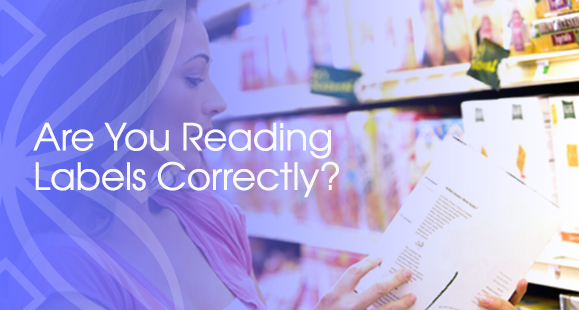

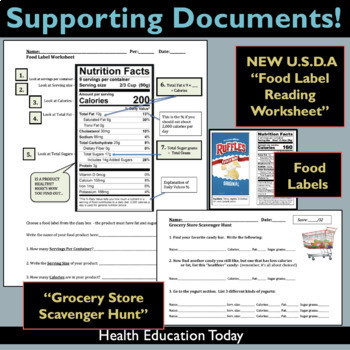

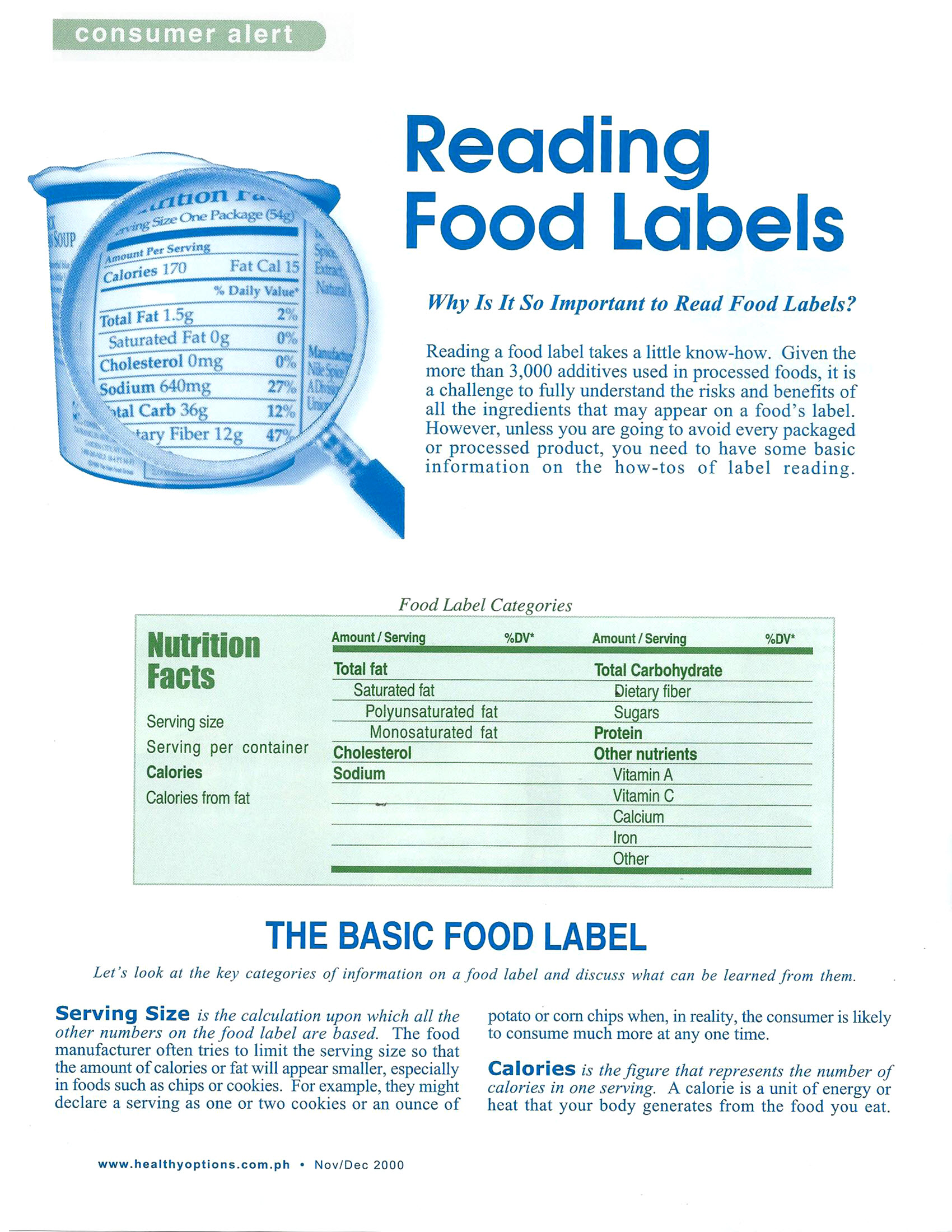

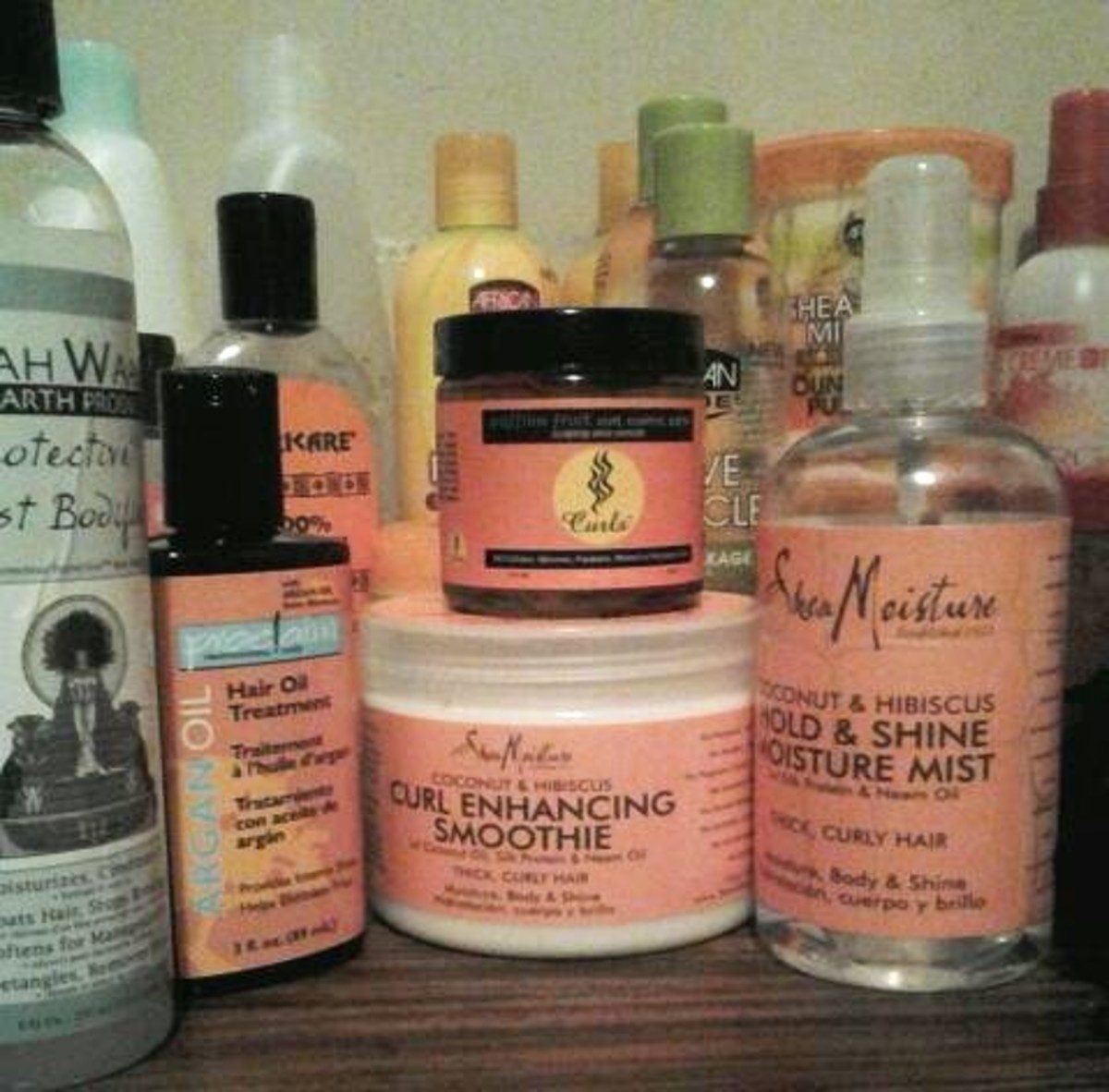

Post a Comment for "40 reading and understanding food labels"